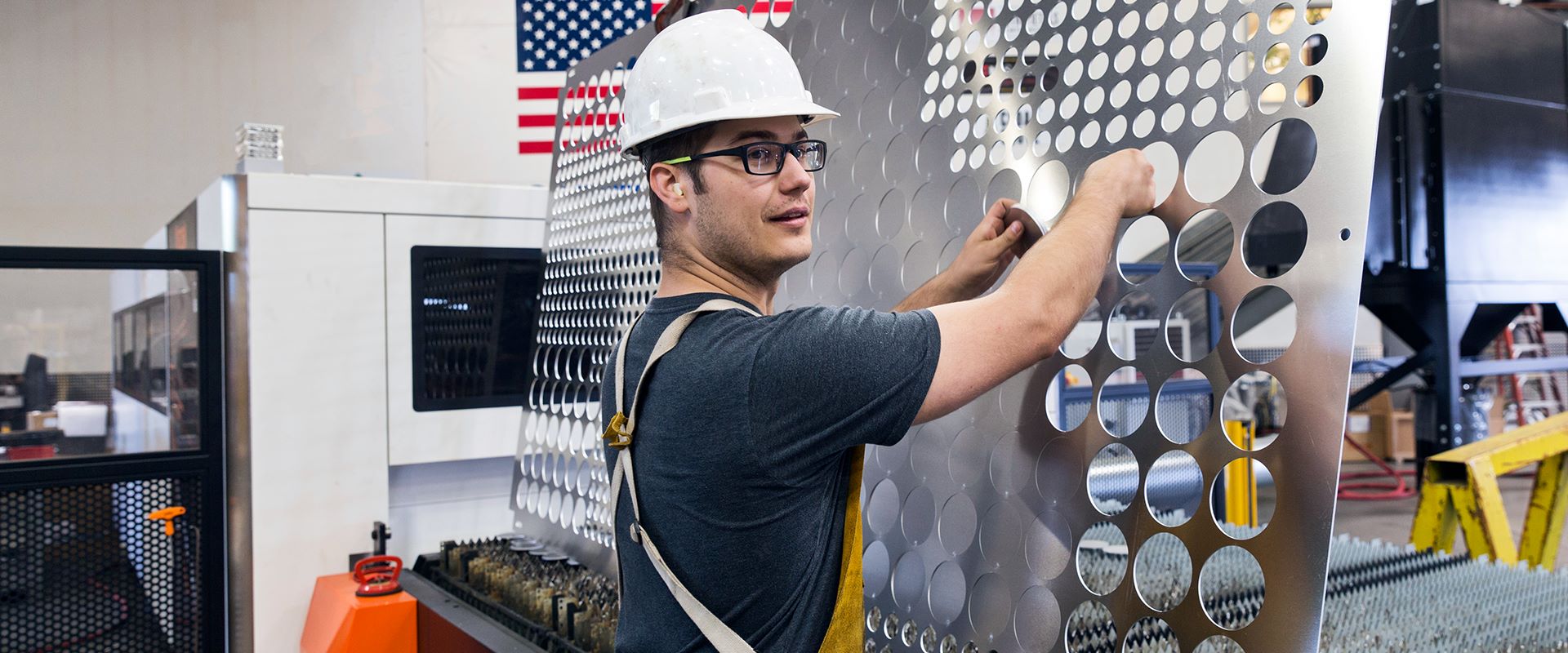
Forging Ahead: Top Priorities and Strategic Imperatives for US Manufacturing
- Article

Manufacturing in America has always been more than production lines. During the early days of COVID-19, U.S. factories swiftly shifted to produce ventilators, masks and sanitizers — not just as producers, but as adaptive, responsive leaders. That agility captures what U.S. manufacturing is all about: the power to evolve, adapt and step up.
As we move through 2024, manufacturers are again facing pressures that demand quick thinking and resilience. Rising inflation, recent supply chain shocks, subtle shifts in demand planning and potential changes in federal policy due to a new administration have brought new layers of complexity. With an eye on how these dynamics are shaping priorities, we reached out to 200 U.S. industrial equipment and technology (IE&T) executives, diving into what’s top of mind for them in today’s environment (see Figure 1).
In the sections ahead, we explore how IE&T leaders are advancing their vision — tackling today’s complexities while building a foundation for enduring growth and industry reinvention amid shifting economic currents.
Over the past year, U.S. IE&T companies have adjusted their strategies to stay one step ahead — strengthening core operations to support growth and weather economic shifts. Our survey of industry leaders found that near-term priorities focus heavily on boosting profit and revenue along with reinforcing supply chain resilience and building business continuity. These essentials have become critical for managing ongoing disruptions while setting the groundwork for sustainable growth (see Figure 2).
Survey insights reveal three primary areas where IE&T leaders are concentrating their efforts:
Reflecting on 2023, IE&T companies had been zeroing in on material costs, inflation, labor shortages and supply chain stabilization. But this year’s survey shows a pivot: Revenue growth, supply chain stability and profit margins are now at the forefront. Leaders are also placing renewed emphasis on automation, digitization and environmental, social and governance (ESG) initiatives, areas that had taken a backseat while companies handled immediate crises such as the pandemic. This shift points toward a more forward-looking industry vision that aligns with societal and technological trends.
As these near-term initiatives take root, IE&T companies are not just meeting immediate needs — they’re laying the foundation for larger, transformative shifts. Focusing on core essentials now will better position them to tackle future challenges and seize new opportunities in 2024 and beyond.
Although near-term priorities remain focused on core essentials such as revenue growth, supply chain resilience and profitability, IE&T companies are also turning their attention to longer-term transformations (see Figure 3).
Survey responses indicate that even though core priorities are unlikely to change drastically over the next five years, executives are placing increasing emphasis on areas such as automation, digitization and talent management — foundational pillars expected to drive growth and resilience well into the future.
Within these long-term goals, backlog management and business continuity remain essential as companies balance capacity with demand. Although backlogs have largely stabilized, meeting customer expectations without overcommitting resources has underscored the importance of rigorous capacity management. As shown in Figure 4, IE&T leaders are prioritizing risk management frameworks, scenario planning and the expansion of predictive analytics capabilities to enhance resilience across operations.
This long-term vision for sustainable manufacturing is setting the course for the actionable strategies that IE&T leaders are implementing to remain competitive in an evolving landscape.
IE&T companies show varied levels of confidence in their ability to achieve near- and long-term objectives. While executives generally express optimism for the future, they report stronger confidence in reaching long-term goals over short-term ones. This optimism is driving plans to accelerate investments across key initiatives, reinforcing a proactive stance on growth and transformation in the sector (see Figures 5a-5c).
Survey responses reveal two primary areas of focus where companies are concentrating investments to meet their objectives:
U.S. IE&T companies are actively addressing both immediate challenges and long-term transformations, positioning themselves for resilience and growth in an evolving landscape.
In the near term, executives are streamlining operations, managing inflation impacts, stabilizing supply chains and building workforce resilience. Backlog management and risk mitigation remain top priorities, with a focus on operational efficiency and expanding aftermarket services to sustain profitability amid ongoing pressures.
Looking forward, IE&T leaders see automation, digitization and data-driven decision-making as critical levers for building resilience and adaptability. As electrification efforts mature, attention is shifting to new opportunities in ESG, predictive analytics and other transformative approaches essential for a sustainable future.
Notably, over 80% of IE&T executives (surveyed prior to November 5, 2024) expect the election outcome to impact their operations, prompting a heightened focus on operational resilience. Factors likely to affect their plans include anticipated price hikes due to trade policy shifts, changes in government spending and potential regulatory adjustments.
This approach reflects a sector poised not only to meet today’s demands but to navigate with agility and foresight future shifts in policy, economic conditions and market dynamics. Adaptability and innovation now stand as twin pillars of success in the journey ahead.
For those ready to lead, our expertise in translating these insights into actionable strategies can help turn vision into measurable outcomes. As manufacturers forge ahead toward 2025 and beyond, our experience in navigating these complex shifts stands ready to support them at every step.
For more information, please contact us.
L.E.K. Consulting is a registered trademark of L.E.K. Consulting LLC. All other products and brands mentioned in this document are properties of their respective owners. © 2024 L.E.K. Consulting LLC